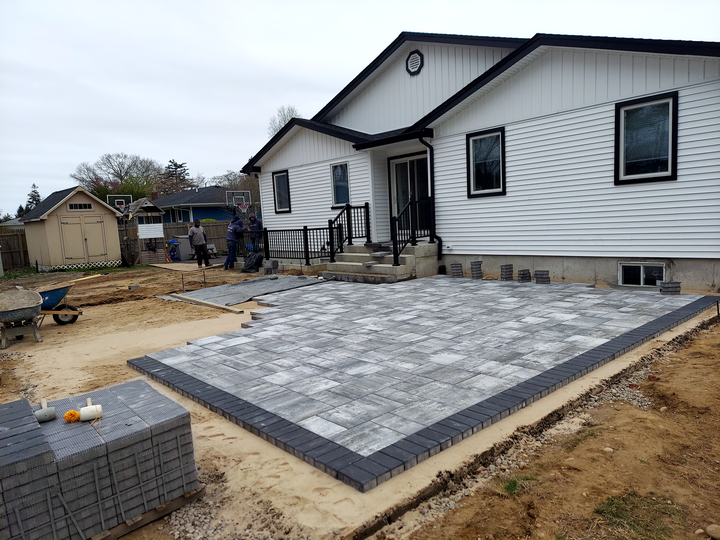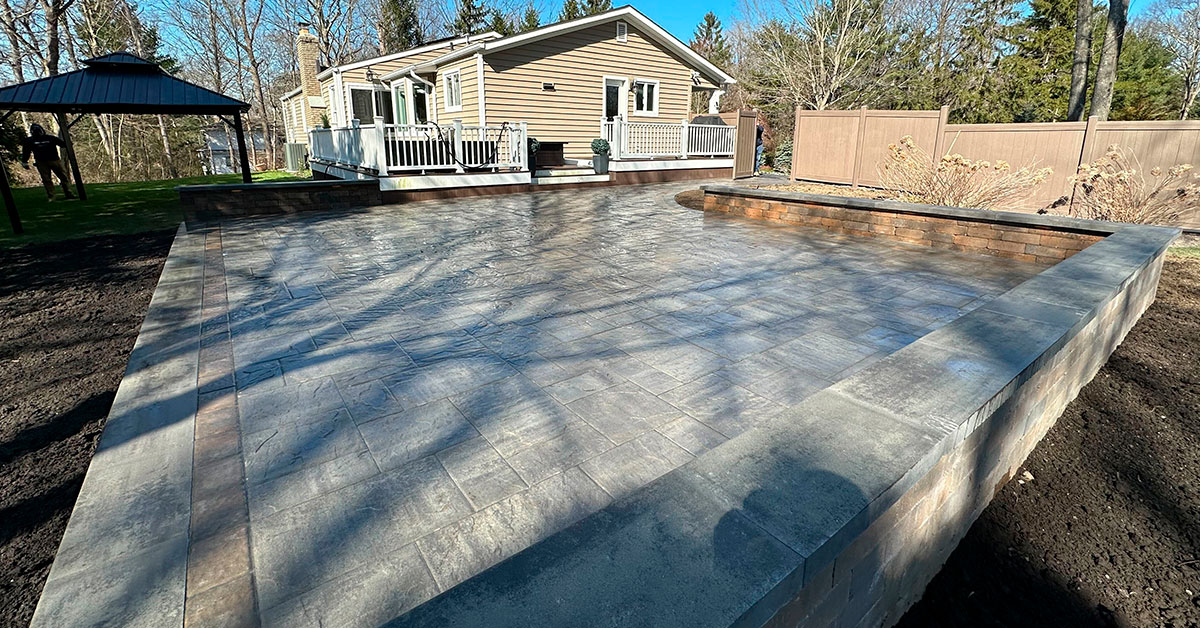Introduction
Creating a beautiful and functional patio can significantly boost your outdoor living space. However, many homeowners make common patio mistakes that can lead to costly repairs and disappointing results. In this guide, we’ll explore some of the most frequent errors to avoid when designing and building your Suffolk County patio.

Common Patio Design Mistakes
Neglecting drainage: Poor drainage can lead to water pooling, erosion, and damage to your patio. Ensure your patio has a slight slope to allow water to drain away.
Choosing the wrong materials: Selecting materials that are not suitable for Suffolk County’s climate can lead to premature wear and tear. Opt for materials that can withstand the region’s weather conditions.
Overlooking maintenance: Failing to plan for ongoing maintenance can result in a patio that quickly becomes unsightly. Consider the long-term care requirements of your chosen materials.
DIY Patio Installation Pitfalls
If you’re planning to install your own patio, there are a few common pitfalls to avoid:
- Inadequate base preparation: A weak base can lead to uneven settling and cracking. Ensure that the base is properly compacted and leveled.
- Incorrect paver spacing: Too much or too little space between pavers can affect the stability and appearance of your patio.
- Using the wrong joint sand: The type of joint sand you use can impact the durability and appearance of your patio.
Common Patio Maintenance Mistakes
To keep your patio looking its best, avoid these common maintenance mistakes:
- Neglecting to seal pavers: Sealing your pavers protects them from stains, weathering, and fading.
- Using harsh chemicals: Avoid using harsh chemicals that can damage your pavers or surrounding plants.
- Ignoring minor repairs: Small cracks or damaged pavers should be repaired promptly to prevent further damage.
Avoiding Common Patio Mistakes in Suffolk County
To avoid patio mistakes and ensure a long-lasting, beautiful outdoor space, consider the following:
- Consult a professional: A landscape designer or contractor can provide expert advice and help you create a custom patio.
- Choose the right materials: Select materials that are well-suited to your climate and lifestyle.
- Proper installation: Ensure that your patio is installed correctly by a qualified professional or by following detailed instructions.
- Regular maintenance: Develop a routine maintenance plan to keep your patio looking its best.
Conclusion
By avoiding these common patio mistakes, you can create a beautiful and functional outdoor space that will enhance your home and lifestyle. Remember, a well-designed patio is an investment, so it’s worth taking the time to do it right.
Frequently Asked Questions
1. What are some common mistakes people make when choosing materials for their Suffolk County patio?
Selecting the wrong materials can lead to a variety of problems, including premature wear, uneven settling, and poor drainage. Common mistakes include:
- Choosing materials that aren’t suitable for the climate: For example, using softwoods in a coastal area can lead to rot and decay.
- Not considering the weight of the materials: Heavy materials may require additional support.
- Failing to consider the long-term maintenance requirements: Some materials require more maintenance than others.
2. How can I ensure that my DIY patio is level?
A level patio is essential for both aesthetics and functionality. Here are some tips to ensure your patio is level:
- Use a level: Check the level of your patio at multiple points during the installation process.
- Prepare a solid base: A well-prepared base is crucial for a level patio.
- Consider using leveling sand: Leveling sand can help fill in any gaps and ensure a smooth surface.
3. What are some common landscaping mistakes that can affect my patio?
Your patio is part of your overall landscape, and mistakes in landscaping can negatively impact your patio. Common mistakes include:
- Planting trees too close: Tree roots can damage your patio over time.
- Not considering drainage: Poor drainage can lead to water pooling around your patio.
- Overlooking lighting: Proper lighting can enhance your patio’s ambiance and safety.
4. How often should I reseal my paver patio in Suffolk County?
The frequency of resealing your paver patio will depend on the type of pavers you have, the climate, and the amount of foot traffic. As a general rule, it’s a good idea to reseal your patio every 2-3 years. Regular sealing will help protect your pavers from stains, weathering, and fading.


